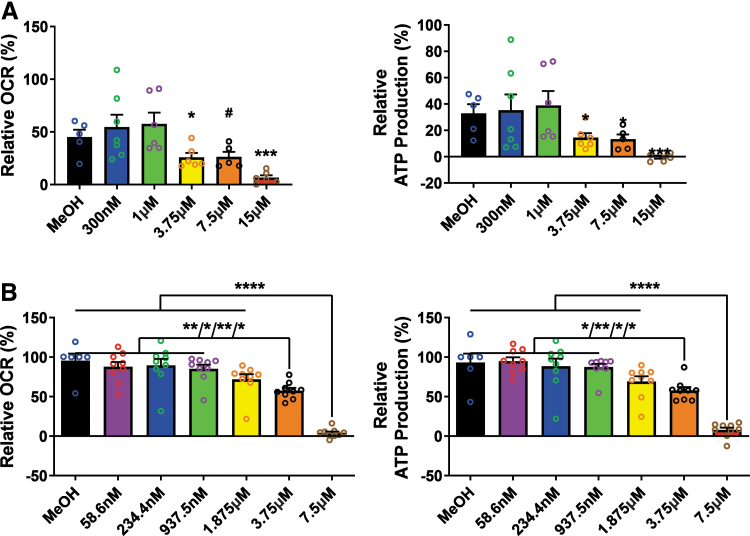FIG. 1.
CBD decreases OCRs and ATP production in BE(2)-M17 neuroblastoma cells and in acutely isolated rat brain mitochondria. (A) Neuroblastoma cells were treated with CBD (0.3, 1, 3.75, 7.5, or 15 μM) for 24 h. Left panel shows basal respiration and the right panel indicates ATP production. Both basal respiration and ATP production are significantly decreased by CBD at concentrations >1 μM (one-way ANOVA; OCR [F(5, 29)=(6.032), p=0.0006] and ATP production [F(5, 29)=(3.718), p=0.0101]). Total protein quantity per well was used to normalize the data. Data are expressed as mean±SEM (n=2–4 replicate wells in each group from two separate experiments) and *p<0.05, ***p<0.001, and #p=0.06. (B) Isolated rat brain mitochondria were treated with different concentrations of CBD (0.06, 0.23, 0.94, 1.875, 3.75, or 7.5 μM) for 10 min. Left panel shows basal respiration and right panel indicates ATP production. Both basal respiration and ATP production are significantly decreased by CBD at concentrations >1.875 μM (one-way ANOVA with Tukey post hoc test; OCR [F(6, 53)=(28.24), p<0.0001] and ATP production [F(6, 53)=(23.72), p<0.0001]). Data are expressed as mean±SEM (n=3 rats per group) and *p<0.05, **p<0.01, and ****p<0.0001. ANOVA, analysis of variance; CBD, cannabidiol; OCR, oxygen consumption rate; SEM, standard error of the mean.

